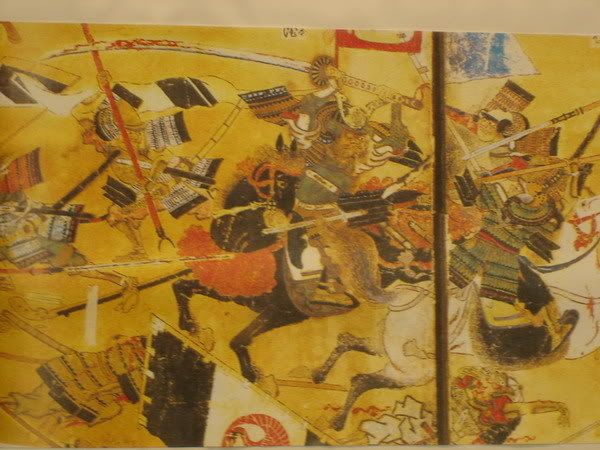KhivalrousBear said:
Anyway, how do people back then fight in mass?? Do the guys on the front line duel each other or just try to stab as many enemies they see? As in mount and blade they just clump (is that a word?) up en masse, especially in castles and just fails to swing at the enemy because of the friendly dudes in the back.
Mass pike battles could get very, very messy. The ideal situation would be to charge your opponent in the flank while he was still reforming to face you and thus scatter him, but in cases where pike formations clashed head-on the pikes would lock, and often the momentum from the back ranks pushing forward could lead to heavy casualties for the front ranks (this is often why they received double pay). Look up "push of pike" for more details.
There's some limited evidence that the bamboo pikes used by ashigaru were flexible enough to allow for overhead swings, and that one tactic in Sengoku mass battles would be to have the front line advance together on step at a time while holding their spears at the very butt end. With with each step taken, they would strike downward with the spears, in order knock down and away a wall of pikes in front. This is recorded in "Zohyo Monogatari", or "The Foot Soldier's Tales" a purported compilation of Sengoku era tactics - it was compiled after in the Edo period, though, so at best it probably reflects late period tactics if at all.
A translation can be found
here. Here's the relevant quote (emphasis added):
Zohyo Mongatari said:
Do not take it for granted that you should stab with a spear. Thrusting should be fine in a combat with one or even two enemies, but if you have a number of spears, all you need to do is unite and strike down together.
There's a lot of other interesting tidbits that reveal certain assumptions about Sengoku-era warfare (the section on bowmen reveal that 1 bowmen was meant to be deployed amongst 2 teppo, and was to shoot while the gunners reloaded) so it can be worth a read through, although again this may not have represented a universal view of Sengoku tactics and practices.
Jozen said:
I'll consider bringing a nice short stabby stabby tanto, for the tight spots in castles? I presume thats where you find bum rushing the face hugging occurring?
A wakizashi might be better since it can block. The bigger problem with large weapons in close quarter situations is the tendency to get caught on stuff. Warband is frustratingly opaque in giving you feedback on things that your swing might catch on. Nagamaki, naginata, and nodachi are rather difficult to use once you get inside castle keeps since the swing will get caught on allies, enemies, interior pillars, etc. and if the swing gets interrupted at a bad moment you could get stabbed.
It's still doable, but you have to be really careful and know your limits. With a katana there's rarely any situation where you can't stab or overhead hack, even if things get really tight. With a longer weapon, you ideally want to be in the second or third rank, and slash through the gaps between your allies (this works really well with overhead polearm stabs, if you've enabled those animations).











